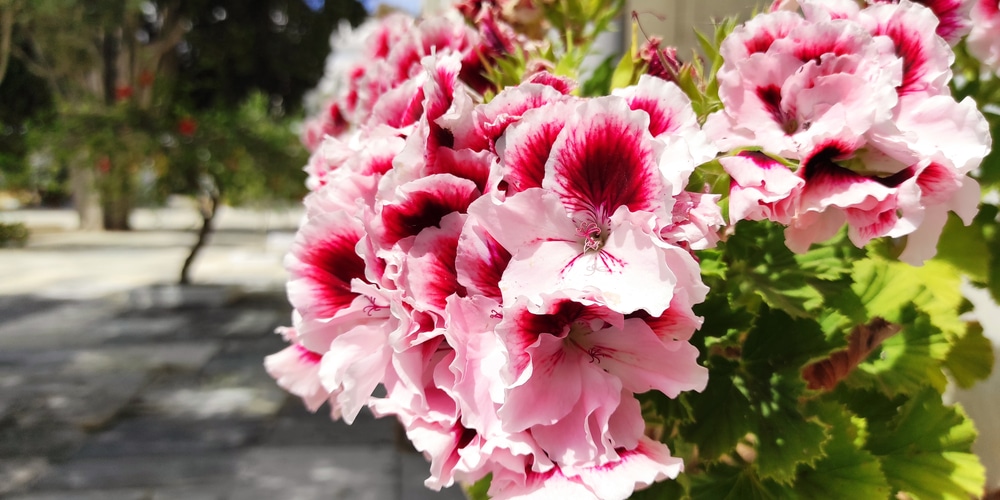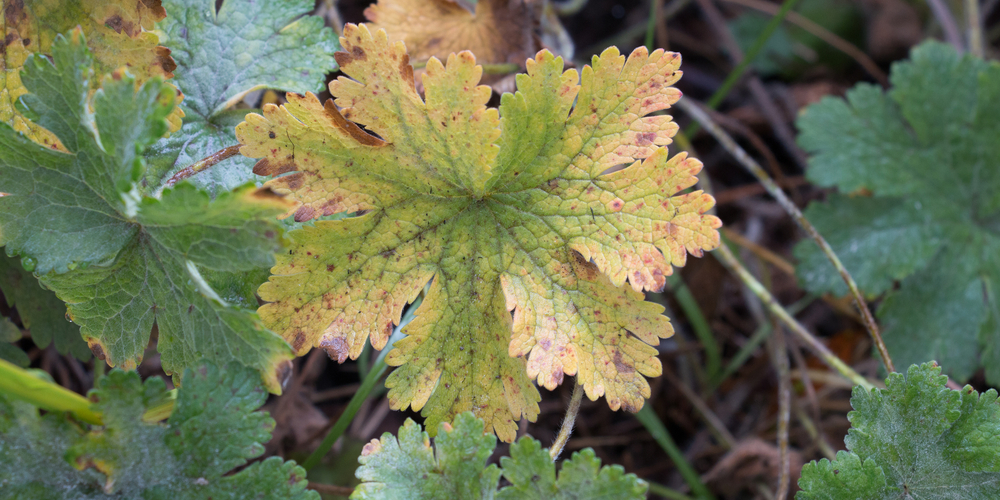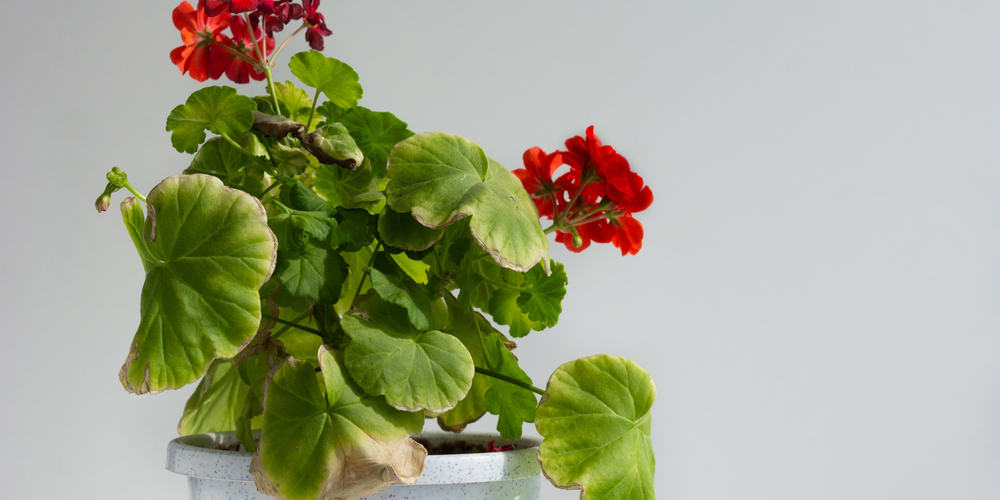Geraniums are beautiful plants thanks to their bright, pop-pom-like flowers. The lovely blooms come in clusters of 4 to 5 inches, and if cared for well, they will keep blooming.
These popular bedding plants are often grown as perennial shrubs in warmer climates and annuals in colder areas.
Originally from South Africa and Europe, geraniums have thick, rounded leaves. Generations of gardeners bring geraniums indoors for winter.
Most gardeners manage to keep these plants alive during the cold months of winter.
However, you might start seeing the foliage of your geraniums yellowing even while they’re outdoors. When this happens, you may start yelling at your smart speaker, “Alexa or Ok Google, why are my beautiful geranium leaves turning yellow?
So, before you do so, take a breather and read the post below. In this article, we list several reasons why your beautiful geraniums are turning yellow.
Why Geranium Leaves Turn Yellow
There are several reasons why your geranium leaves are turning yellow.
Micronutrient Deficiency
To ensure your geraniums thrive and bloom, you need to fertilize them bi-weekly or at least once a month. It’s recommended to give your plants balanced water-soluble fertilizer.
Magnesium is one of the core nutrients that geranium plants need. This nutrient affects the chlorophyll molecule that’s responsible for the production of the green pigment.
If your geraniums lack magnesium, the leaves will start turning yellow. The leaves start turning yellow from the center towards the veins of the leaves.
Zinc deficiencies can also cause geranium leaves to turn yellow. They can also turn purple while the shoots and roots will stop growing.
A lack of nitrogen will cause the lower leaves to turn yellow with brown tips. Then they will have stunted growth, and eventually, the brown tips will spread on the leaves, finally killing them.
To know if your plants lack vital nutrients, test your soil with a soil test kit. Purchase a test kit that gives you Electrical Conductivity and pH readings. When buying fertilizer, make sure magnesium, zinc, copper, phosphorus, and other minerals are present. If not, supplement by adding Epsom salts.
Overwatering
It’s best to water your geraniums when they need it. To know this, perform the finger test. You should only water your geraniums when the top 1-inch of the soil is dry. If you overwater your geraniums, they will have too much water to drink. As such, the bottom leaves will start turning yellow.
This is common when you grow your geranium outdoors in full sun where the plants receive several inches of rain in summer and spring. Geraniums are drought tolerant plants and do not do well when you overwater them.
If the top 1-inch of the soil is dry to touch, water the plants from below. Water the roots because if the leaves are left wet for long, it will cause Bacterial Leaf Spots. If this happens, you should see yellow spots on the leaves.
Fungal Infections
Like other plants, geraniums are prone to fungal infections. In fact, the majority of the infections are usually caused by wet leaves. Bacterial blight, botrytis blight, and powdery mildew are some of the infections that affect geraniums.
The worst are the Verticillium wilt, Cercospora, and Alternaria leaf spots that cause brown spots with yellow halos. If not treated, the infections trigger defoliation. The good news is there are several methods for preventing fungal infections.
The safest prevention method is to water at the soil level and not the leaves or flowers. As earlier said, if the water stays for too long, it will cause Bacterial Leaf Spots. If you maintain moisture or humidity at the recommended levels, you can reduce bacterial and fungal infections.
Another prevention method is deadheading. Simply pinch the spent blossoms off before they fall to the ground. Fungal and bacterial infections start on spent flowers. If infections occur on potted plants, repot in fresh potting mix.
Extreme Cold Weather
Geraniums can grow best with a night temperature of 50 to 60 F or 10 to 16 C. They can survive a drop to 32 F or 0C as long as they’re kept dry.
However, extremely cold weather and frost severely affect geraniums. This is true especially when the cold is for an extended period.
If growing your geraniums outdoors, you can take them inside if the weather is extreme. However, if not possible, you’ve to prepare the plants for the harsh weather. When geraniums are exposed to extreme cold, the leaves turn yellow.
If there is a frost forecast and you can take the plants indoors, water them properly.
Make sure you do so from below and not above. Water acts as an insulator and protects your geraniums. This is because when temperatures drop, the heated moisture from your geraniums will provide the plant with heat.
Herbicides
Many people use herbicides to get rid of weeds, a common problem in most gardens. If you use herbicides to get rid of weeds, the chemicals may affect your geraniums. One of the side effects is the yellowing of leaves.
Yes, not all herbicides are lethal or harmful to geraniums but most of them bleach the leaves. So, if you notice your geranium leaves yellowing after using herbicides to get rid of weeds, then stop using the herbicides.
The best method to control weeds in your garden is to remove them manually. You need to do this frequently to protect your geraniums from unwanted growth. Another method of controlling weeds is to use mulch.
Why Are The Leaves On My Geraniums Turning Yellow: Final Words
Geraniums add a nice touch of color to your home and garden. Besides color, the leaves produce a variety of fragrances from nuts to mint. If you notice the leaves yellowing or even turning red, do not worry.
Just check the reasons we mentioned above, and you might find the one responsible for the problem.
Related Article: Do Deer Eat Geraniums?


